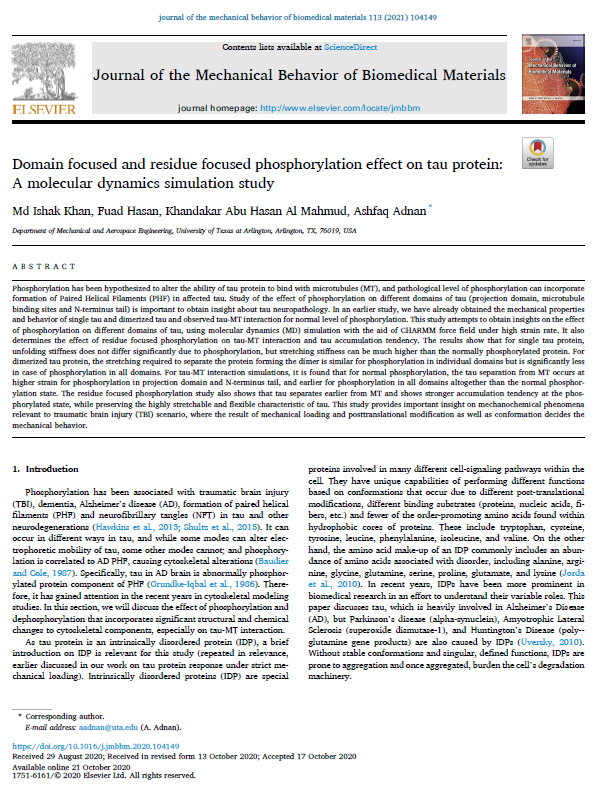Science News
Domain focused and residue focused phosphorylation effect on tau protein: A molecular dynamics simulation study
Feb 03, 2021 | News

Phosphorylation has been hypothesized to alter the ability of tau protein to bind with microtubules (MT), and pathological level of phosphorylation can incorporate formation of Paired Helical Filaments (PHF) in affected tau. Study of the effect of phosphorylation on different domains of tau (projection domain, microtubule binding sites and N-terminus tail) is important to obtain insight about tau neuropathology. In an earlier study, we have already obtained the mechanical properties and behavior of single tau and dimerized tau and observed tau-MT interaction for normal level of phosphorylation. This study attempts to obtain insights on the effect of phosphorylation on different domains of tau, using molecular dynamics (MD) simulation with the aid of CHARMM force field under high strain rate. It also determines the effect of residue focused phosphorylation on tau-MT interaction and tau accumulation tendency. The results show that for single tau protein, unfolding stiffness does not differ significantly due to phosphorylation, but stretching stiffness can be much higher than the normally phosphorylated protein. For dimerized tau protein, the stretching required to separate the protein forming the dimer is similar for phosphorylation in individual domains but is significantly less in case of phosphorylation in all domains. For tau-MT interaction simulations, it is found that for normal phosphorylation, the tau separation from MT occurs at higher strain for phosphorylation in projection domain and N-terminus tail, and earlier for phosphorylation in all domains altogether than the normal phosphorylation state. The residue focused phosphorylation study also shows that tau separates earlier from MT and shows stronger accumulation tendency at the phosphorylated state, while preserving the highly stretchable and flexible characteristic of tau. This study provides important insight on mechanochemical phenomena relevant to traumatic brain injury (TBI) scenario, where the result of mechanical loading and posttranslational modification as well as conformation decides the mechanical behavior.
https://www.tubintrain.eu/wp-content/uploads/2021/02/DP1-s2.0-S1751616120306950-main.pdf
Written by tubinAD
